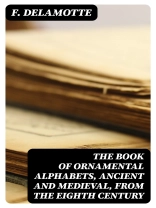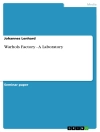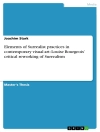F. Delamotte’s ‘The Book of Ornamental Alphabets, Ancient and Medieval, from the Eighth Century’ is a rich compendium of letterforms that spans a millennium, showcasing the intricate artistry and diversity of alphabets from the eighth century onward. With a keen eye for design, Delamotte meticulously captures the stylistic nuances of each alphabet, placing them within their historical context. The book is not merely a catalog but a visual celebration of the aesthetic evolution of writing, blending elements of calligraphy, typography, and decorative arts that reflect the cultural tapestry of their time. F. Delamotte was a notable figure in the field of decorative arts and type design, and his expertise is evident in this work. His passion for historical typography and his scholarly approach to ancient manuscripts likely informed his desire to compile a resource that would be both visually appealing and intellectually enriching. Delamotte understood the profound impact that these ornamental alphabets had on art and communication throughout history, making his work a significant contribution to the study of graphic forms. This book is highly recommended for artists, designers, and historians alike, as it serves as both an educational tool and an inspirational resource. Whether you are delving into the world of calligraphy or exploring the roots of modern typography, Delamotte’s work offers invaluable insights that are poised to inspire creativity and appreciation for the beauty of written language.
Circa l’autore
F. Delamotte, a prominent figure in the Victorian era’s artistic and typographic scene, is best known for his commitment to the revival of ornamental lettering and documentation of historical scripts. His most notable contribution to the field of calligraphy and type design is ‘The Book of Ornamental Alphabets, Ancient and Medieval, from the Eighth Century, ‘ a painstakingly gathered collection showcasing styles ranging from the early Christian period to the Renaissance. Delamotte’s scholarly approach not only cataloged these styles but also facilitated their resurgence in an age dominated by industrial advances and print. Little is known about Delamotte’s personal life, and due to the specificity of his work and the time that has elapsed since his contributions, the biographical details remain as elusive as many of the ancient scripts he sought to preserve. Despite this, his influence persists, and his work continues to be a touchstone for those studying the art of fine lettering and the history of typography. Delamotte’s literary style can be characterized as didactic and meticulous, mirroring the precision required by the craft of calligraphy itself. His legacy lives on in the pages of his revered book, a treasure to calligraphers, type enthusiasts, and historians alike.












